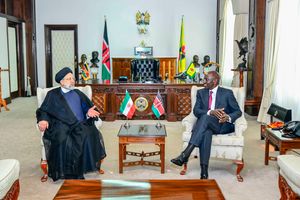Women with disability face higher risks of violence
What you need to know:
- As noted by the Coalition on Violence against Women in a 2020 report, the assumption that GBV affects all women and girls in the same way regardless of their disability status is false.
- The assumption is evident in the tendency to aggregate statistics on persons with disabilities, implying that they are homogeneous.
While gender-based violence (GBV) is a risk for all women, it is a particular one for intellectually challenged ones. Intellectual disability – can be mild, severe or profound – is a condition that reduces the capacity to learn, retain new information and exhibit normal social behaviour and functions.
As noted by the Coalition on Violence against Women in a 2020 report based on data from Nairobi, Narok and Kiambu, the assumption that GBV affects all women and girls in the same way regardless of their disability status is false.
The assumption is evident in the tendency to aggregate statistics on persons with disabilities, implying that they are homogeneous.
At its 47th session on July 5, 2020, the UN Human Rights Council observed that “global data on GBV against women with disabilities is limited”, although a United Nations Population Fund initiative estimates that “between 40 and 68 per cent of young women with disabilities experience sexual violence before age 18”.
The paucity of data on the number of intellectually challenged women subjected to GBV makes it difficult to appreciate the magnitude of the problem.
Studies and organisations have identified a number of problems on this theme. UN Women notes that women with disability generally face a higher risk of GBV than their male counterparts. It observes that such violence comes from family members, intimate partners, caregivers and institutional facilities.
The Disability Data Report 2021 cites a study covering 26 countries which established that “on average, women with disabilities are 1.5 times more likely to be subject to violence compared to [those] without a disability”.
A study by Gillian Eastgate and colleagues in Australia noted that “people with intellectual disability …may lack the assertiveness to report abuse or the verbal skills to describe it”. They may also not “recognise an experience as abusive”. Moreover, “when abuse is reported, responses may be inadequate”.
In Kenya, such responses are compromised by lethargic, costly and remote law enforcement agencies and service providers. The UN Human Rights Council session recognised that isolation of women and girls with disabilities in homes or care institutions often aggravates their vulnerability to abuse.
Furthermore, the institutions “may lack access to a functional complaint mechanism” suited to the inmates with “communication or intellectual impairments”. Women who report “may be ignored, disbelieved, or misunderstood”, a factor that sustains the violence.
Harmful traditions
Violence against these women is particularly engraved in retrogressive cultural beliefs and practices that perpetuate their treatment as inferior to the able-bodied counterparts, undeserving of property inheritance and a blot on family honour. Since the women have special needs, they constitute an additional financial and logistical burden on families.
Also, the fact that they have limited ability to perform routine domestic chores such as farming and fetching water and firewood, makes them be regarded as a liability, resulting in neglect.
Discrimination against the group is worsened by pre-existing local practices such as denial of educational opportunities, adequate nutrition and proper healthcare.
Traditional beliefs that intellectually challenged persons are a curse informs lack of seriousness by family and community to pursue justice on their behalf, hence resort to traditional mechanisms instead of statutory law.
Moreover, families that report perpetrators to the police often face threats from the abusers, which discourages disclosure and entrenches silence and impunity.
The cases are also frustrated by parents who hide affected daughters from the police, including by relocating them to places not easily accessible. This compromises the collection of evidence and ultimately weakens the cases even if reported.
The tendency to negotiate with perpetrators is fortified by pressure from family members implicated in the abuse. But even when the perpetrator is prosecuted under statutory law and jailed, the victims still bear the full costs of the abuse, often unaware that they can claim compensation under the Victim Protection Act.
The community is another weak link due to negative attitudes towards this group, as is a lack of dedicated actors and institutions monitoring and taking action specifically on the abuses.
Further, agencies expected to address their plight are encumbered with excessive workload, insufficient resources and challenges in collecting and preserving evidence. Systemic corruption also leads to cases being compromised by influential perpetrators and their accomplices.
Recommendations to address the issue include establishment of a dedicated register in health facilities, police stations and courts of law to capture the cases, training of service providers in human rights and unique needs of the group, free legal aid, social networks, helplines and rescue shelters.
The crux of the matter, however, is proactivity at family and community levels. Anything else amounts to treating the symptoms rather than root causes of the problem.
Dr Miruka is an international gender and development consultant and scholar; ([email protected])





